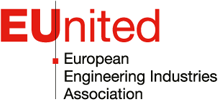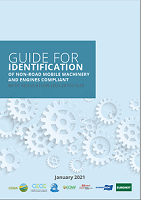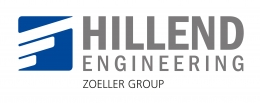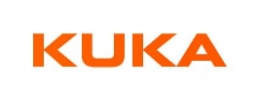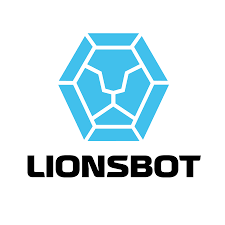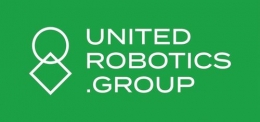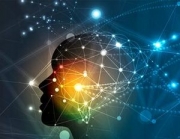
September 2019
Automation, AI and jobs: Why this time is NOT different!
An opinion piece by Patrick Schwarzkopf, Director of EUnited Robotics
Will robots and artificial intelligence (AI) take over, lead to massive job displacements and soon send our societies into turmoil? Or are they simply great tools we can use to create a world with increased prosperity, resource-efficiency and new cures for terrible diseases? A reality check shows: It is time to leave techno-panics behind.
Groundhog Day
One of the greatest constants in the history of automation anxiety has been the affirmation that ”this time is different“. Although previous waves of automation did not decrease employment, this narrative suggests that the latest technological progress is unique and incomparable to anything that has come before. It claims that masses of people will soon be forced out of their jobs and stripped of their livelihoods. “This time is different” has been a mantra since steam engines replaced muscle power, machines mechanized manual labour, computers and robots were introduced and the internet transformed the world. So it should come as no surprise that the slightly modified version - ”this time is really different“ - dominates the headlines of a renewed global wave of AI and automation angst. The current AI breakthrough, the sceptics warn, is a complete game changer sparing virtually nobody – not even people in white collar jobs - from the sheer endless capabilities of these new smart machines. While it is true that AI technologies are making rapid progress and transform even the legal and medical professions, this time is NOT different. “AI systems are no different from shovels or tractors: They are tools in the service of humans, and we can use them to make our lives vastly better“, concludes Robert Atkinson of the Information Technology & Innovation Foundation (ITIF). So, what mechanism is at work here? A simple one: Technology boosts productivity, purchasing power goes up, more is produced and bought while total employment remains constant (or even grows). A virtuous cycle that makes us more prosperous. That is why countries with an especially high robot density – such as Japan, South Korea or Germany - have low levels of unemployment. That is why the automotive industry in Germany was able to increase its robot base by 36% and at the same time raise employment by 18% (between 2010 and 2018). Researchers Gregory, Salomons and Zierahn looked at automation impact on jobs in Europe and found that while automation displaces jobs, “it has simultaneously created new jobs through increased product demand, outweighing displacement effects and resulting in net employment growth.”[1]
Powerful, yet overrated
As fascinating as the progress in AI (especially deep learning) has been in recent years, a reality check is needed. This progress is limited to systems made for single and relatively isolated tasks, such as speech recognition, self-driving cars and automated translation. In contrast, little or no progress has been made in creating some kind of “Artificial General Intelligence“ (AGI) capable of applying concepts acquired in one specific context to multiple other contexts. This is exactly what people do all the time. Human intelligence is highly adaptive and relies on a huge reservoir of subconscious (or tacit) knowledge gained during life. Humans are conscious beings, equipped with purpose and capable of combining factual knowledge, common sense, emotion and empathy. Machines do not possess any of these abilities. AI systems do not employ judgment as humans do. Rather, they are simply “prediction machines“ making increasingly educated guesses. By doing so, they become very valuable tools. Tools that need to be combined with human intelligence and judgment for optimum results. If we manage these powerful tools well, we can come to vastly better outcomes in the service of humanity.
Wanted: Faster productivity growth
As we have seen, the proponents of the “this time is (really) different“ narrative suggest that the current AI and robotics technologies are so powerful, that their impact on the labour market will be unprecedented. If this were true, we should already see a huge boost in labour productivity (the output produced per working hour). Instead, we see the exact opposite. While productivity grew quickly in the past, it has been anemic in the developed economies for years: far behind the 1950s and 1960s (driven by electromechanical and material innovations) and the 1990s (driven by computing and the internet). If anything is different this time, it is the lower (or slower) than expected impact of the promising new AI technologies. So we need to facilitate a smart and responsible technology uptake in order to reap the benefits it can bring while mitigating any associated risks.
One size fits all?
Deep learning – a powerful subdiscipline of AI - has an extremely wide range of use cases. It can be applied to identify people, to evaluate creditworthiness, to detect cancer, to make vehicles drive by themselves or predict machine failures even before they occur. As with most powerful tools, their use can be as beneficial as it can be harmful. In her best-selling book “Weapons of Math Destruction“, data analyst Cathy O’Neill shows examples of badly set up (or in some cases even ill-intended) algorithms denying young families the mortgage for their first family home, firing really good teachers for incompetence and undermining democracy with an avalanche of “bot-created” fake Tweets. We are well-advised to take these warnings seriously. Wherever people’s lives and life decisions are directly affected by AI systems, we need to ensure the necessary accountability and fairness in their use. That is why ethics boards are being set up around the globe to come up with much needed guidelines for a safe and unbiased use of AI. But all too often, these groups recommend a uniform set of general principles for evaluating AI - no matter where and how it is used. This is not a good idea. Application fields abound where deep learning can create great benefit without incurring any risks to people’s lives. This is especially true in machine building and manufacturing, where these smart algorithms should indeed be allowed to work their magic without subjecting them to stringent “algorithmic bias“ or “explainability“ regulations where such risks simply do not exist. So rather than indiscriminately applying one comprehensive set of rules to all AI use cases, smart ethics guidelines and regulations are needed in order to differentiate between widely varying risk levels of AI. It’s the same as with socks: One size never really fits all.
[1] Terry Gregory, Anna Solomons, Ulrich Zierahn, CESifo Working Paper 7247: Racing With or Against the Machine? Evidence from Europe, page 1, September 2018
Industrious Brussels EU District, Avenue des Arts 6-9, 1210 Brussels, Belgium, +32 490 57 57 65
Transparency Register number: 0289344948-82
